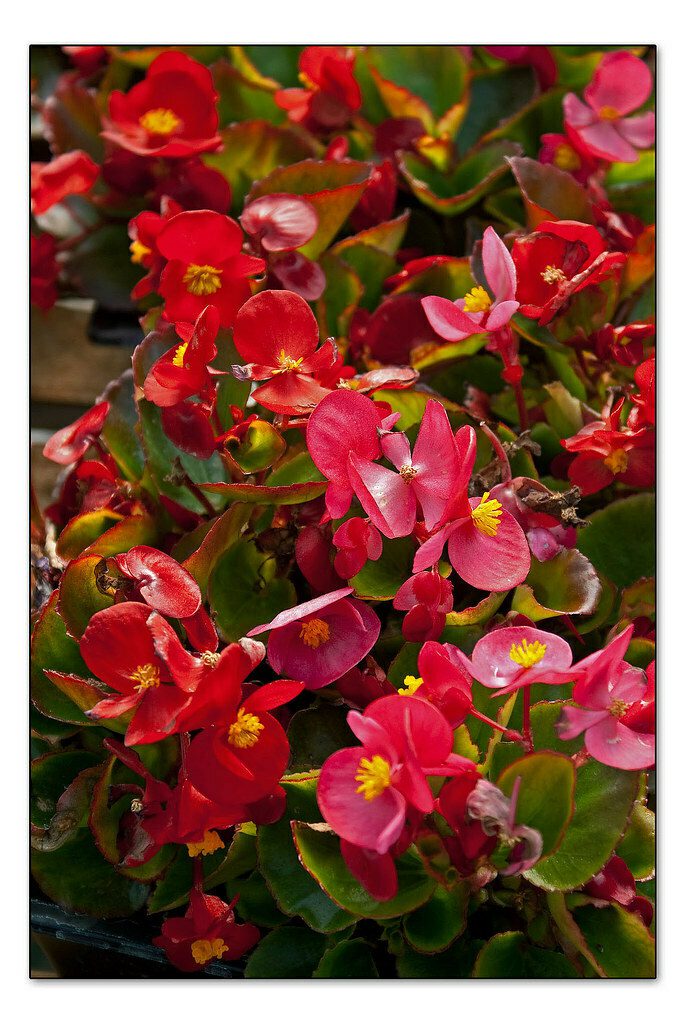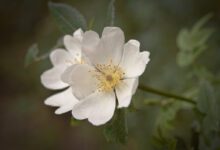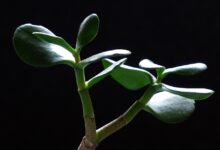Story of Day :
Scarlet Begonia (Begonia Coccinea) is a tropical plant that is native to South America. It is a member of the begonia family and is known for its beautiful red flowers.
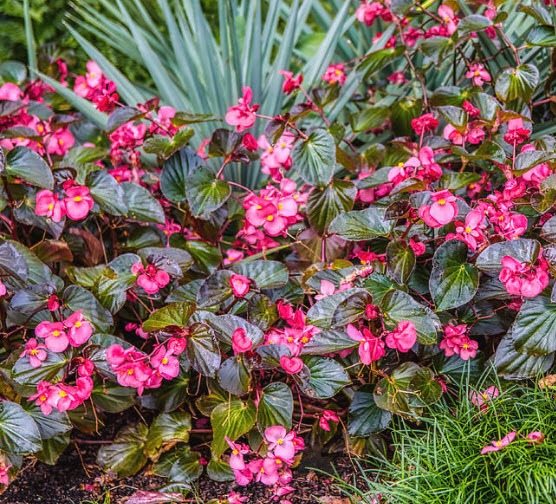
The plant typically grows to be about two feet tall and has dark green leaves.
Scarlet Begonia is a popular plant for gardens and is often used as an accent plant.
Contents
- 1 Proper Soil for Scarlet Begonia
- 2 Watering Scarlet Begonia
- 3 How much Scarlet needs sunlight?
- 4 Temperature
- 5 Humidity
- 6 Begonia Scarlet Fertilizer
- 7 Repotting Scalret
- 8 Don’t forget Pruning for This Begonia
- 9 Propagating via Stem Cuttings
- 10 Propagation The Scarlet through Seeds
- 11 Blooms
- 12 Diseases and Pests
Proper Soil for Scarlet Begonia
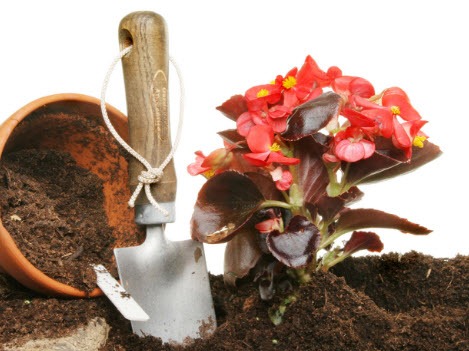
Scarlet begonias are a stunning plant that can add a burst of vibrant color to any garden. They are not only beautiful but also incredibly easy to grow due to their common soil composition.
The soil composition required for Scarlet Begonias varies depending on the specific variety, but all types need well-drained and slightly acidic soil with a pH range between6.0 and 7.0
When it comes to soil mix, the ideal combination for Scarlet Begonias is two parts peat moss to one part perlite or sand.
This mixture allows for the perfect balance of water retention and air circulation, which are critical to the growth and development of the plant. Moreover, adding organic matter to the planting area is crucial for a healthy Scarlet Begonia as it requires a good amount of it in its soil.
Adding compost or manure will provide the necessary nutrients and promote good soil structure, which will help the plants thrive
In summary, when planting Scarlet Begonias, it is important to ensure that the soil composition is suitable for their growth.
A combination of peat moss, perlite, or sand, along with sufficient organic matter, will provide them with the ideal growing environment. So, if you want to add a pop of color to your garden, consider adding Scarlet Begonias and don’t forget to give them the right soil mix to help them thrive.
Watering Scarlet Begonia
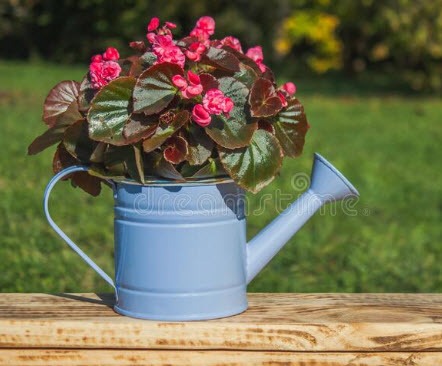
Ensuring that your scarlet begonia thrives and produces vibrant blooms is essential for any gardener. One of the most critical factors to consider is proper watering. Watering your scarlet begonia regularly and deeply is necessary for healthy growth
Deep watering means providing enough water to reach the roots of the plant. This boosts the absorption of water and essential nutrients, preventing the plant from drying out. Therefore, it is advisable to water your scarlet begonia until the soil is thoroughly moist, without causing waterlogging.
If you’re growing scarlet begonias indoors, watering once a week or fortnight should be sufficient. However, outdoor cultivation may require more frequent watering, depending on weather conditions. Hot weather or long, dry spells may require more frequent watering, while cooler periods will require less
To prevent shock, always use lukewarm water when watering your scarlet begonia. Cold water may cause the plant to go into shock, leading to stunted growth or even death
In conclusion, adequate watering is a significant factor in your scarlet begonia’s overall health and vibrancy. Regular deep watering will help your plant to absorb the required nutrients, and produce healthy foliage and beautiful blooms.
So, pay attention to your watering schedule and offer your scarlet begonia the care and nourishment it needs for a flourishing garden.
Also, read about 43 types of popular indoor plants.
How much Scarlet needs sunlight?
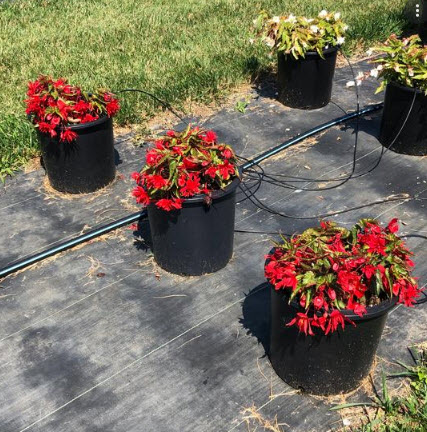
Scarlet begonias are beautiful plants that are known for their vibrant, red flowers. However, in order for them to thrive, they require a certain amount of sunlight.
In fact, these flowers need at least four hours of direct sunlight every day to flourish. Without proper sun exposure, their leaves will begin to turn yellow and eventually, they may even stop blooming altogether
For this reason, it’s important to pay close attention to how much sunlight your scarlet begonias are receiving. If you notice that they aren’t getting enough sun, it may be necessary to move them to a sunnier location.
This is particularly important if you’re growing these plants indoors. To ensure that your indoor scarlet begonias get enough sunlight, try placing them near a window that gets plenty of direct sunlight throughout the day
Overall, caring for scarlet begonias requires a bit of attention and care. However, with the right sunlight and a little bit of TLC, these stunning flowers can thrive and bring beauty to your home or garden for years to come.
So be sure to give your scarlet begonias the sunlight they need to truly shine.
Temperature
If you’re a plant lover and eager to care for Scarlet Begonias, it’s essential to keep their environment comfortable. These stunning plants thrive in temperatures between65 and75 degrees Fahrenheit.
This range is ideal for their growth, health, and overall appearance. It’s important to maintain this temperature to ensure that the plant doesn’t become too stressed or damaged
What’s more, Scarlet Begonias are versatile and can tolerate lower temperatures. If the temperature drops below the ideal range, don’t worry – they can withstand temperatures as low as50 degrees Fahrenheit.
Though it’s not an ideal situation, the plant can still live through this temperature range
It’s worth mentioning that the temperature is just one aspect of caring for Scarlet Begonias. They also require adequate sunlight,
watering, and fertilization. Nonetheless, temperature plays a vital role in the plant’s life, so ensure you keep an eye on it
In conclusion, Scarlet Begonias thrive in a temperature range between65 and75 degrees Fahrenheit, but they can tolerate temperatures as low as50 degrees Fahrenheit. Always pay attention to your plant’s needs to ensure it remains healthy and attractive.
Also, read about how to care for Begonia Maculata.
Humidity
If you’re thinking of adding a Scarlet Begonia to your indoor plant collection, it’s important to know that this delicate plant is quite particular when it comes to the humidity levels in its environment.
The good news is, with a little bit of attention and care, it’s relatively easy to keep your Scarlet Begonia thriving!As mentioned earlier, the humidity level needed for a Scarlet Begonia varies depending on the time of year and the plant’s stage of growth.
In the spring and summer, when the plant is actively growing, it requires a slightly higher humidity level of around40-50%.
During this time, it’s important to ensure that the plant is kept in a well-lit area with regularly moistened soil. Additionally, you can use a humidifier or lightly mist the plant a few times a week to maintain the appropriate level of humidity
On the other hand, during the fall and winter months, when the plant is dormant, the humidity level can be decreased to around30-40%.
During this time, it’s important to reduce the amount of water you give the plant and to ensure that it’s kept in a warm, draft-free area. Although it’s important to reduce the humidity level during the plant’s dormant period, ensure that it doesn’t get too low, as this can cause the leaves to dry out and turn brown
In conclusion, if you want to keep your Scarlet Begonia looking its best, keep in mind the importance of maintaining a consistent level of humidity. By following these simple guidelines, you can ensure that your begonia will flourish, regardless of the time of year or stage of growth!
Also, read bout How to Pick the Best Plant Humidifier.
Begonia Scarlet Fertilizer
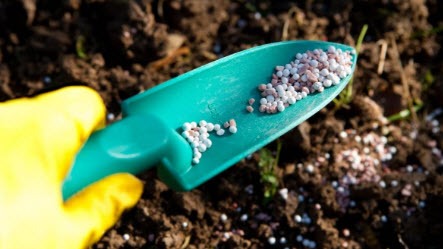
As a Scarlet Begonia owner, it is crucial to pay attention to the nutrition that your plant is receiving.
The right nutrients can mean the difference between a healthy and thriving plant versus one that is struggling to survive. One of the simplest ways to ensure that your Scarlet Begonia is receiving the necessary nutrients is by using fertilizer on a regular basis
The type of fertilizer you use is key in determining the health and growth of your Begonia.
Different stages of growth require different types of fertilizer. During the vegetative stage, a nitrogen-rich fertilizer would be best suited. Nitrogen is essential for developing a strong root system and encouraging the growth of leaves.
During this phase, it is important to use a fertilizer with a higher nitrogen content to get the most out of your plant
However, during the flowering stage, the needs of your Begonia will change, and it will require a different type of fertilizer to achieve optimal growth. At this stage, a phosphorus-rich fertilizer is recommended.
Phosphorus is an essential nutrient that promotes flower development and aids in overall plant growth. Using a fertilizer with a high phosphorus content can help your Begonia produce more blooms and reach its full potential
When applying fertilizer to your Scarlet Begonia, be sure to follow the manufacturer’s instructions carefully. Applying too much or too little fertilizer can be detrimental to the health of your plant.
Over-fertilization can lead to root damage, leaf burn or even death. Under-fertilization, on the other hand, can result in stunted growth and a lack of energy in your Begonia
In conclusion, using the right type of fertilizer at the right time is vital for ensuring the health and growth of your Scarlet Begonia. Regular fertilization with the appropriate nutrients will promote lush foliage, vibrant blooms and overall
Also, read about 10 types of begonia plants.
Repotting Scalret
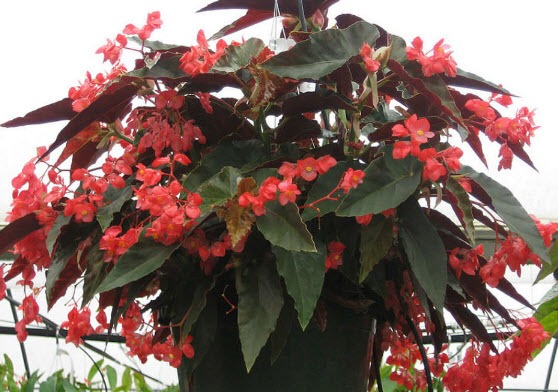
If you want your scarlet begonia to thrive, it’s important to give it the right care – including the occasional repotting. However, you need to pick the right time of year to repot, and early spring is generally the best choice.
To get started, carefully remove the plant from its current pot by gently loosening the root ball. Look closely at the roots and remove any that are dead or damaged. This will help give the plant a fresh start and prevent any potential problems down the line
With the roots pruned and trimmed, it’s time to select a new pot. Don’t choose one that is too big – instead, opt for a pot that is only slightly larger than the root ball. This will encourage healthy growth without overwhelming the plant
As you fill the new pot with fresh potting mix, take care to position the begonia correctly. Then, gently pack the soil around the roots, being careful not to damage them in the process.
Give the newly repotted plant a good drink of water, and place it in a location where it will receive bright, indirect light.
By following these steps, you can help ensure that your scarlet begonia gets the best possible start in its new pot, setting it up for vibrant growth and beautiful blooms in the months ahead.
Don’t forget Pruning for This Begonia
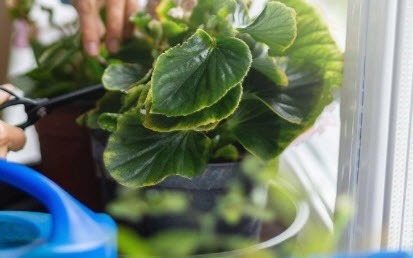
Pruning your Scarlet Begonia is an essential aspect of plant care that should not be overlooked. By regularly pruning your plant, you can stimulate new growth, eliminate dead or dying leaves and stems, and promote a fuller and healthier appearance
To start the pruning process, begin by removing any dead or dying leaves and stems from your Scarlet Begonia.
Dead or decaying foliage can often be identified by its brown or black coloration, and should be cut back as soon as possible to prevent further damage
Next, take a look at any leggy or overgrown stems that may be detracting from the overall appearance of your plant.
These should be trimmed back to a healthy bud or node, allowing your Scarlet Begonia to direct its energy towards new growth and healthy development
If you notice any diseased or damaged leaves or stems on your plant, be sure to prune these away as well.
These can often be identified by their distinct discoloration or unusual patterns, and should be removed promptly to prevent spread of disease throughout your plant
Finally, take the time to shape your Scarlet Begonia by trimming away any stray or unruly leaves or stems.
This will help to give your plant a neat and tidy appearance, while also promoting healthy growth and development
By following these simple tips for pruning your Scarlet Begonia, you can help to ensure that your plant thrives and continues to brighten up your living space for years to come.
Propagating via Stem Cuttings
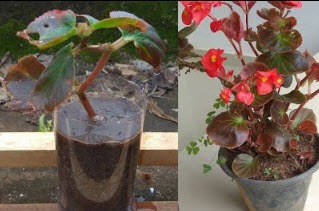
The best time to take stem cuttings from a scarlet begonia is in late summer or early fall.
Cut off a 4 to 6-inch section of stem that includes a leaf node (the point on the stem where a leaf is attached).
Make the cut just below a leaf node using a sharp knife or pruning shears.
Remove the lower leaves from the cutting, leaving two or three leaves at the top.
Dip the cut end of the stem into a rooting hormone powder, then tap off any excess. Fill a small pot with a well-draining potting mix.
Stick the cutting into the potting mix, making sure that at least one leaf node is buried. Water the potting mix well.
Place the pot in a bright location but out of direct sunlight. Keep the potting mix moist but not soggy. Roots should form within four to six weeks.
Once the roots have formed and the plant is growing well, you can transplant it into a larger pot or into the garden.
Propagation The Scarlet through Seeds
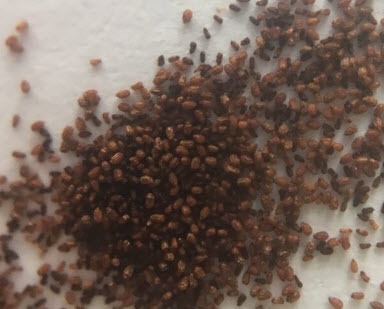
Scarlet begonias can be propagated by seed, but it is a slower process and does not produce an identical plant to the parent.
The ideal time to sow scarlet begonia seeds is in late winter or early spring. Start by soaking the seeds in water for 24 hours before planting.
Fill a seed tray or pot with a well-draining seed starting mix and make indentations in the soil with your finger.
Place 2-3 seeds in each indentation and cover with a thin layer of soil. Water the seeds gently and place the tray or pot in a warm, bright location.
Keep the soil moist but not soggy, and in 10-14 days the seeds should germinate.
Once the seedlings have two sets of true leaves, thin them out so that only the strongest seedling remains in each pot.
Transplant the seedlings into individual pots filled with a potting mix when they are 4-6 weeks old.
Blooms
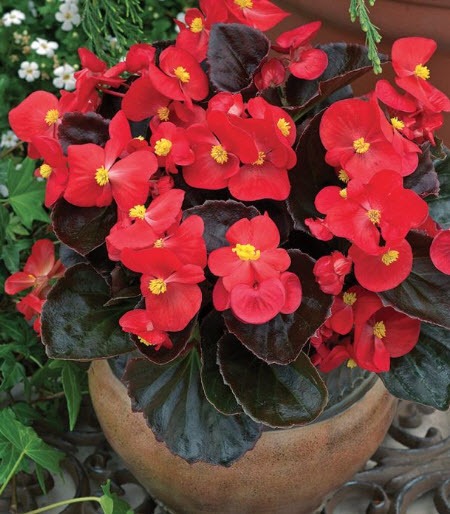
Scarlet begonias are highly sought after for their breathtaking beauty and vibrant, eye-catching color. They are typically known to bloom in late spring or early summer, providing a show-stopping spectacle that takes your breath away.
However, it’s important to note that depending on the variety, they may also bloom later in the season, adding a pop of color to your garden as the cooler months draw near
If you’re looking to add a splash of bright red to your landscape, then scarlet begonias might be just what you’re looking for.
With their velvety leaves and bold, dramatic blooms, these stunning flowers are a perfect choice for anyone looking to add a touch of elegance and sophistication to their outdoor space
One of the great benefits of scarlet begonias is their versatility. Because they bloom at different times of the year, they can be used to add color to your garden all season long.
Whether you’re looking for a striking centerpiece for your spring garden or a vibrant accent for your fall decor, scarlet begonias are sure to impress
So if you’re searching for a way to liven up your landscape with a burst of bold, brilliant color, look no further than scarlet begonias.
With their dazzling blooms and distinctive appearance, these lovely flowers are a true showstopper that are sure to turn heads and capture hearts.
Diseases and Pests
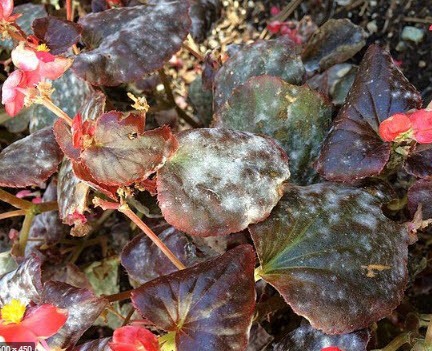
Diseases and pests are a major concern when growing Scarlet Begonia. Some of the most common problems include powdery mildew, leaf spot, rust, and aphids.
These problems can often be controlled with proper care and treatment, but it is important to be aware of them in order to take preventive measures.
Powdery mildew is a type of fungus that can cause leaves to become covered in a white, powdery substance.
It is often caused by too much moisture or humidity.
To prevent powdery mildew, water your Scarlet Begonia in the morning so the leaves have time to dry before nightfall.
If powdery mildew does appear, treat it with a fungicide. Leaf spot is another fungal disease that can cause leaves to develop brown or black spots.
It is often caused by too much moisture or humidity, as well.
To prevent leaf spots, water your Scarlet Begonia in the morning so the leaves have time to dry before nightfall.
If a leaf spot does appear, treat it with a fungicide. Rust is a fungal disease that can cause reddish-brown spots on leaves.
It is often caused by too much moisture or humidity.
To prevent rust, water your Scarlet Begonia in the morning so the leaves have time to dry before nightfall.
If rust does appear, treat it with a fungicide. Aphids are small, soft-bodied insects that can cause damage to leaves and flowers.
They are often controlled with insecticidal soap or other similar products.
Aphids can infect begonia plants on the undersides of their leaves. The fix, you need to cut the leaves that are attacked by lice.
Spray the part of the plant infested with aphids with pressurized water. You can use a mixture of 4 teaspoons of dish soap into 1 liter of water.
Spray on the part of the leaf that is attacked by fleas.
After a few hours, rinse the soapy liquid that hits the leaves so as not to damage the leaves.
